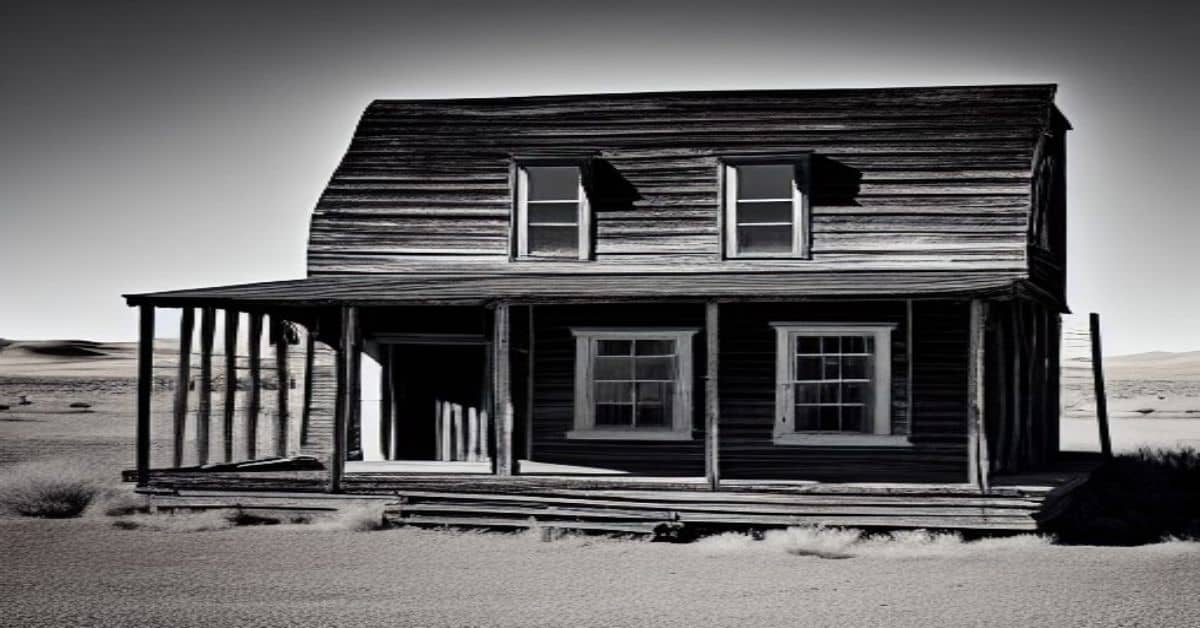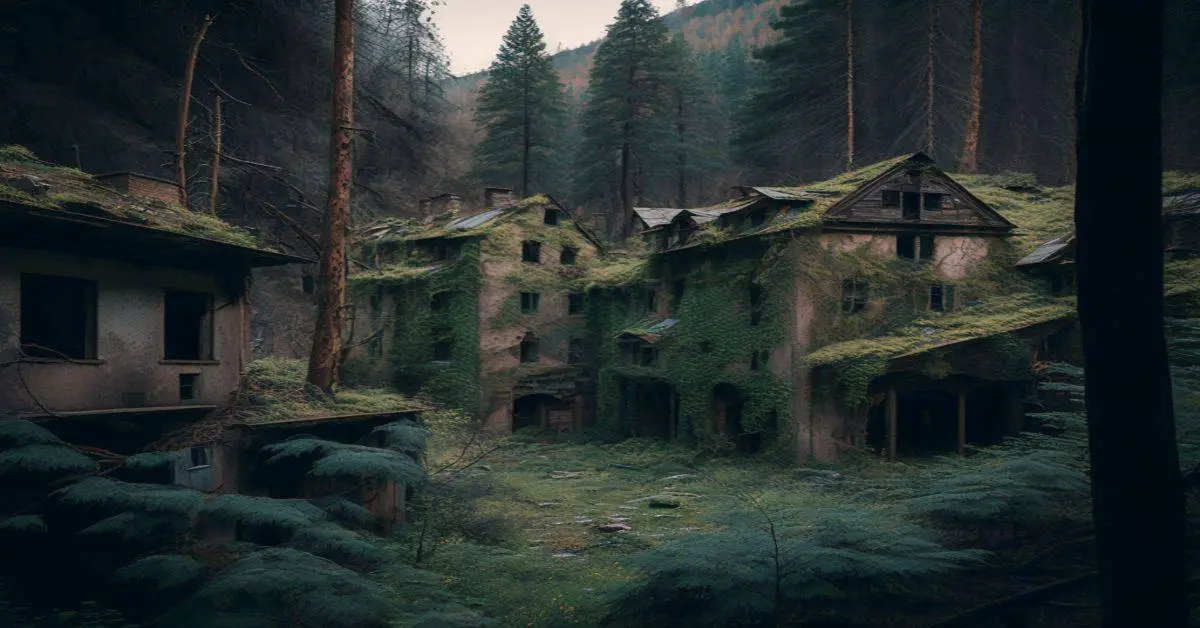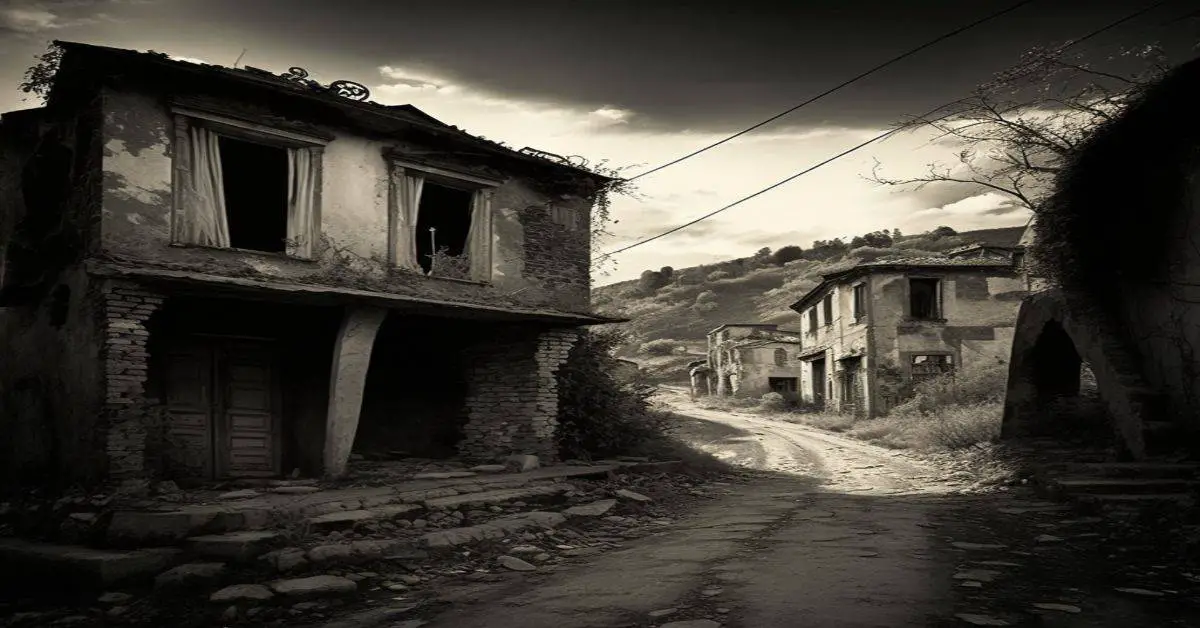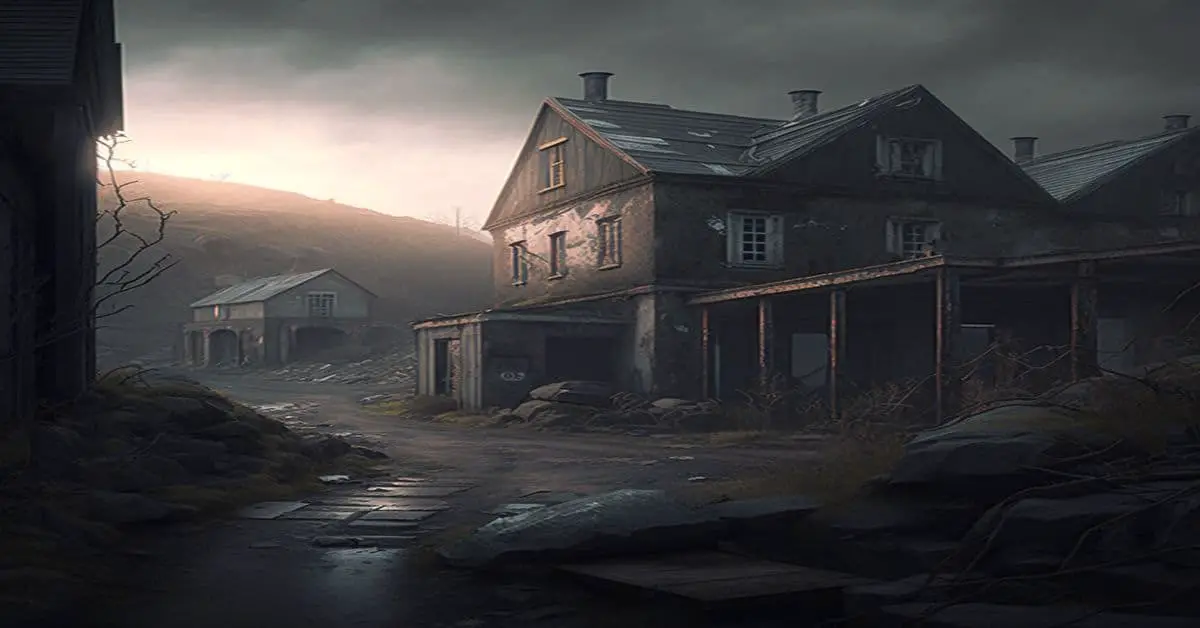Throughout the United States, countless ghost towns hold a fascinating glimpse into the nation’s past. These abandoned settlements showcase the rise and fall of communities, industries, and dreams while providing a hauntingly beautiful backdrop for modern-day explorers. This article delves into the intriguing world of American ghost towns, their history, and what makes them so captivating.
We’ve researched just over 4,000 ghost towns across America to give you a comprehensive look at their distribution, origins, and unique stories. So, let’s embark on a journey through the eerie remnants of these once-thriving communities.
A Brief Overview of Ghost Towns in America
The term “ghost town” refers to a once-populated community that has dwindled over the years, often due to economic hardship or the depletion of natural resources. Some ghost towns have vanished entirely or were absorbed into newer settlements, while others still stand, at least in part, allowing us glimpses of what these now-abandoned places once were.
Ghost towns are primarily associated with the Wild West frontier and people flocking to areas with valuable mineral resources, including gold and silver in the Rockies and oil in Texas.
Most ghost towns date back to westward expansion and industrialization between 1880 and 1940. States such as Texas, California, Kansas, Oklahoma, and the Dakotas are home to numerous ghost towns, largely due to mining, oil discoveries, and farming communities that fell victim to the Dust Bowl and economic downturns of the 1930s. In recent decades, heritage tourism has given some ghost towns a second chance to thrive, attracting visitors worldwide.
10 Historic American Ghost Towns
1. Berlin, Nevada
Named by German prospectors who came looking for gold, Berlin was a company mining town established in the 1880s. The town was largely abandoned by the 1910s after the mine closed in response to strike action.
The well-preserved structures are now part of Berlin-Ichthyosaur State Park, known for fossil discoveries of a prehistoric marine mammal. Nearby ghost towns include Ione, NV, and Broken Hills, NV.
2. Kennecott, Alaska
Kennecott was established as a mining town in 1903 to take advantage of the area’s copper deposits (the emergence of electric power having increased copper’s value considerably). The mines were depleted by 1938 and the town was largely abandoned. Since the 1970s, the town has become an increasingly popular tourist destination. Nearest city is McCarthy, AK.
3. Fort Jefferson, Florida
More of a ghost fortress than a ghost town, Fort Jefferson’s construction began in 1846 as part of Florida’s defenses against piracy. It also served as a prison during the Civil War, then became a quarantine station and a navy refueling point before it was abandoned in 1906 due to hurricane damage.
Fort Jefferson has been a National Monument since 1935 and is open to tourists. It remains the largest brick structure in the U.S. Nearest city is Key West, FL.
4. Garnet, Montana
In the 1890s, Garnet was a thriving mining town with a population of over a thousand, served by up to 13 saloons. The community emptied as miners left for World War I. World War II halted a revival of gold mining in the 1930s, and the town has been abandoned ever since.
Around 30 buildings remain today, and an annual Garnet Day allows visitors to experience life in this 19th-century mining town. The nearest city is Missoula, MT, with nearby ghost towns including Coloma, MT, Barmouth, MT, and Pioneer, MT.
5. Bodie, California
Established as a mining camp in 1859, Bodie boomed after sizable gold discoveries during the 1870s. The town was in decline by the 1910s; the newspaper ceased publication in 1912, and the railway was abandoned in 1918.
The last mine closed in 1942 as dynamite and other resources were redirected toward the war effort. Today, the town is open to visitors with around 110 structures still standing. The nearest city is Bridgeport, CA, with nearby ghost towns, including Aurora, NV, Dogtown, CA, and Masonic, CA.
6. St. Elmo, Colorado
This well-preserved ghost town attracted over 2,000 residents by the 1880s, when gold and silver mining peaked. However, increasingly poor-quality ore sent the town into decline by the end of the decade. A new mine temporarily revived prospects in the 1910s, but the industry abandoned the town for good in 1936.
A few inhabitants remain, and its picturesque setting is a favorite summer tourist destination. The nearest city is Buena Vista, CO, with nearby ghost towns including Tincup, CO, and Turret, CO.
7. Castle Dome, Arizona
Castle Dome was established as a mining camp in 1862 and at one point, attracted more than 3,000 residents. The town’s fortunes declined when it became apparent that most of the ore contained lead rather than silver. In the long run, the mines became profitable as they supplied lead for bullet manufacturing during both World Wars.
The last mine was operating as recently as the 1970s but has since been converted into a museum. Nearby ghost towns include Picacho, CA, Jaeger City, CA, and Tumco, CA.
8. Harrisburg, Utah
After a flood in 1862, the residents of Harrisville (named after settler Moses Harris) relocated upriver to form Harrisburg. Problems, including drought, led to the departure of much of the population, and the town was effectively abandoned by 1895. Interstate 15 runs through the site of the town, structures of which are still visible.
The last intact building is the Orson B. Adams Home, named for its original inhabitant, which has been maintained and restored by the Bureau of Land Management. The nearest city is St. George, UT, with nearby ghost towns including Adventure, UT, Duncan’s Retreat, UT, and Grafton, UT.
9. Bannack, Montana
Founded in 1862, Bannack was briefly the capital of Montana. Up to 10,000 people lived in the surrounding area, hoping to make their fortune in gold, but by 1870 all the easy-to-reach ore was gone and the population rapidly declined to the hundreds.
Newly developed electric dredging methods led to a brief revival after 1895, but by the 1940s the town was deserted. Today, about 60 intact structures remain. Nearby ghost towns include Lion City, MT, Pioneer, MT, and Trapper City, MT.
10. Steins, New Mexico
This railroad and mining town was named after United States Army Major, Enoch Steen. It was initially established in the 1880s after gold, silver, and copper discoveries, and in 1905 a rock quarry opened to provide ballast for the railways. The quarry’s closure in 1925 sent the town into decline, and when the railroad (the desert town’s only source of water) closed in 1944, most remaining residents departed.
Since 1988, the surviving buildings have (intermittently) been open as tourist attraction. The nearest city is Lordsburg, NM, with nearby ghost towns including Shakespeare, NM, and Alabama.
State-wise Distribution of Ghost Towns
Alabama
There are 56 ghost towns in Alabama, with Talladega County containing the most, having 6. There are 11 ghost towns within 50 miles of Hoover. Arcola in Hale County is one such example.
Alaska
Alaska has 100 ghost towns, with Nome containing the most, having 7. There are 4 ghost towns within 50 miles of Anchorage. Kennicott in Valdez-Cordova is a notable one.
Arizona
Arizona has 300 ghost towns, with Yavapai County containing the most, having 24. There are 24 ghost towns within 25 miles of Prescott Valley.
Arkansas
Arkansas has 23 ghost towns, with Marion County containing the most, having 3. There are 15 ghost towns within 50 miles of Fort Smith. Rush in Marion County is an example.
California
California has 346 ghost towns, with Kern County containing the most, having 113. There are 71 ghost towns within 25 miles of Bakersfield. Bodie in Mono County is a notable one.
Colorado
Colorado has 1,500 ghost towns, with El Paso County containing the most, having 14. There are 14 ghost towns within 25 miles of Colorado Springs. St. Elmo in Chaffee County is an example.
From Connecticut to Wyoming, each state has its share of abandoned towns, each with its unique history and stories. Whether looking for a spooky adventure or a chance to explore the past, these ghost towns offer a fascinating glimpse into America’s history.
To get a full list of each state and how many ghost towns are in each state, check out our full list here.
Look for any article that says “Ghost Town In (State Name),” and you will see how many ghost towns are in each state.
Heritage Tourism and Ghost Town Revival
Heritage tourism has breathed new life into some of America’s ghost towns in recent years. Visitors seeking a glimpse into the past can explore these once-thriving communities and learn about their history through guided tours, museums, and preserved structures. This renewed interest in ghost towns has not only helped preserve these important historical sites. Still, it has also provided a unique and captivating tourist experience for those looking to explore America’s rich and diverse past.
From the eerie remains of mining towns in the Wild West to the abandoned farming communities of the Great Plains, America’s ghost towns continue to captivate the imagination and inspire a sense of wonder and curiosity.
So, if you’re looking for a unique and unforgettable adventure, consider embarking on a journey through the hauntingly beautiful ghost towns that dot the American landscape.



